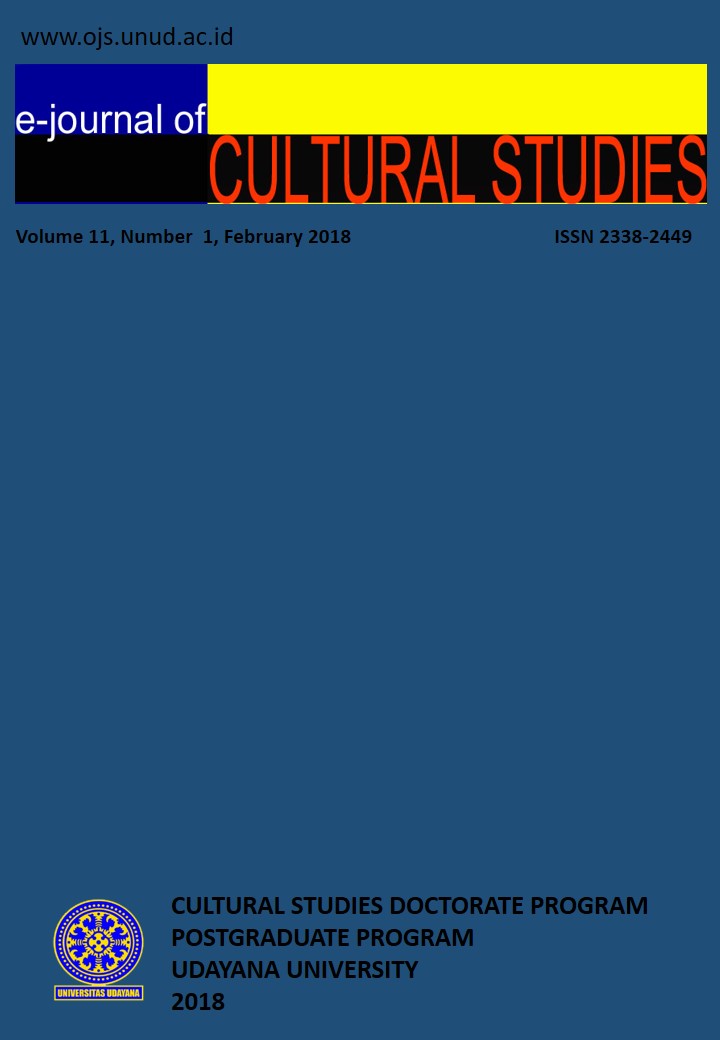THE TEMPLE OF BESAKIH, SUKUH, AND CETHO: THE DYNAMICS OF CULTURAL HERITAGE IN THE CONTEXT OF SUSTAINABLE TOURISM DEVELOPMENT IN BALI AND JAVA
Abstract
Besakih is one of the biggest Hindu temple in Bali and the temple of Sukuh and Cetho are the Hindu temple that still existing in Central Java. These temples have their similarity and differences in the context of how to develop the sustainable tourist development in Indonesia. However, there are not many experts who understand about the cultural relation between the temple of Besakih in Bali, Sukuh and Cetho in Central Java. This becomes important since the indigenization process that took place in the past of history in the two islands are significant to be understood in terms of social cultural, economic and political development in which their influences can be seen at the modern and postmodern Balinese culture. The development of Balinese temple of Besakih can be considered in the 11th century, while for Sukuh and Cetho temple after the fall of Majapahit kingdom in the 15th century. Therefore, it can be said that Hindu did not only develop in Bali, but also in Central Java, in which the development of Hindu for the beginning already took place indeed in the 7th to 8th in the context of Hindu Mataram namely in the era of king Sanjaya. The main questions that are need to be addressed in this paper are how was the process of the end of Majapahit culture that caused the cultural indigenization in the central Java such as shown in the temple of Sukuh and Cetho? Secondly, in which cultural context that occurred since the Javanese kingdoms did not influence the strength of the Hindu culture in the later period? Thirdly, how can it be compared the similarity and the difference between the indigenization in Bali and in Central Java?and lastly how the Balinese and the Javanese interprete their own culture in terms of local wisdom? By addressing these questions, it is expected to have a better understanding on how both communities can strengthen their own culture in the context of their prosperity.







